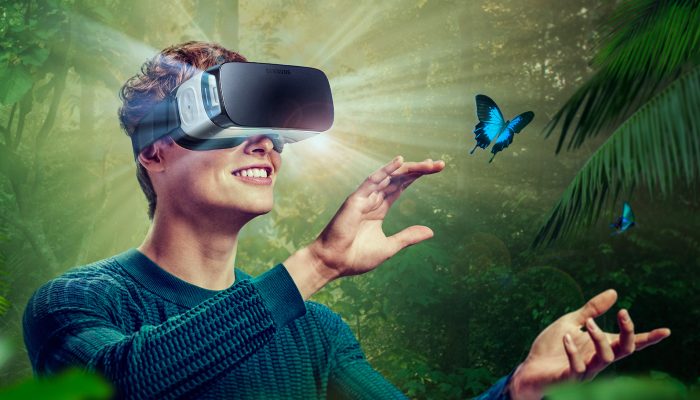 “Our position on architecture integration has not changed at all and we have been making progress on it.”
“Our position on architecture integration has not changed at all and we have been making progress on it.”
☆ NintendObs Event – Nintendo Q2 FY3/2015 Q&A.
Question:
My question is about development costs. From the number of games you have been releasing, I have noticed that the pace at which the company is able to produce software has slowed down. Since the amount of time and the number of developers needed to make one game are increasing in general, this is a difficult challenge unless you can increase your entire development resources. I have heard before that architectural integration of your future home console and handheld video game hardware would also lower software development costs. As I am not aware of any recent updates on this topic, I would like to hear from Mr. Takeda if the company is taking significant steps to deal with this on a semi-conductor level. I would also like to hear from Mr. Miyamoto to see if he has found any dramatic countermeasures to developing games or how much progress has been made to increase development efficiency.
Answer:
Iwata:
First, we quite agree with your point that we need to improve game development efficiency where necessary. On the other hand, what our consumers are looking forward to is not merely a great number of games. What is critical to us is that each consumer feels that the content of the games he/she plays is sufficient, and when the player has completed one game, the next one is offered at the right time. We don’t believe that simply increasing the number of games or just containing the development costs per game are necessarily good for our company, because if we try to simply decrease the per-software development costs just for the sake of minimizing overall costs, the final product will become less-appealing and it will not sell over a long period after its release. On the other hand, when there is software that sells for a long period of time, or is talked about for a long time, this can increase consumers’ motivation to continue playing these games and invite new purchasers. Even if we increase the total number of games, it does not make sense if each one of them becomes less compelling for the consumer. Nintendo offers new downloadable content to increase the number of karts, courses and characters in “Mario Kart 8.” Our primary objective is to have “Mario Kart 8” played continually by consumers. Since many players have already played “Mario Kart 8” with energy and enthusiasm, we realized that we would need a certain level of reinforcement to make people want to play it again. Technologically speaking, this is now possible. When we compare making a new “Mario Kart” game and digitally distributing new courses and characters as add-on content, the required number of developers, development costs and development terms are very different. We believe it is important to create triggers for our consumers to frequently play their favorite games while minimizing development costs on our side. We can now include amiibo to our arsenal, which can also be a trigger to excite people to once again play games they might have already finished. All of these additions are crafted to extend the life of key software, which is very important to us.
As for architecture integration, since we have already announced that plan, we have been making the relevant preparations to avoid the situation in the past in which various software assets could not be leveraged when we launched a new hardware system because making software on the new hardware was significantly different from that of previous systems. Confirming when we will make announcements about these new products or what kind of products they are is quite another story, though. All we can say today is that our position on architecture integration has not changed at all and that we have been making progress on it.
Now, I will invite comments from the people representing our hardware and software developers.
Takeda:
The integration of architecture is our fundamental policy, and we have been making progress. Now that our new hardware systems are on the market, I would need to comment in terms of our next hardware, but I’m afraid I have to refrain from talking about that today. However, one thing I can confirm today, even though this is something relating more to the software side, is that we have not put any restrictions on the technological fields that we research. We have even been studying software development methods and technologies used for smart devices and other products from the viewpoint of how we may be able to establish applicable content to be programmed and produced efficiently at a low cost. Apart from the business models used by smart devices, we are actively researching and learning about a variety of different technological fields.
Miyamoto:
Although architecture integration is very important, there is nothing I can add to this topic today.
As for the number of software titles, as Mr. Iwata said, the more important thing is how many of them are interesting to consumers. The current situation concerning Wii U is that more and more people are purchasing the hardware. The company has deployed a number of campaigns inside and outside of Japan, such as offering consumers free demos of Wii U games for a limited time period or a free download codes for a Wii U game after purchasing “Mario Kart 8.” As we continually promote Wii U through a variety of different campaigns, we are increasing the number of opportunities for potential Wii U hardware and software consumers to experience different Wii U software. Throughout our history, Nintendo has offered consumers games that they can continually play over long periods. This has helped maintain hardware value at a high level for consumers, and we will not deviate from our efforts in this endeavor. One of these efforts is downloadable add-on content for already-released software. As a part of that effort, the main staff members who created “Mario Kart 8” formed an expert team to develop downloadable add-on content with a lot of energy and enthusiasm even after completion of the game.
If I am allowed to do a little bit of PR here, we released a series of short films called “Pikmin Short Movies” on October 25 at the Tokyo International Film Festival. If you have not seen it yet, I hope you will check out the information on the Internet. The short film is only about 20 minutes, but this is our very first animated movie that uses “Pikmin” as its theme. We’re planning to make this 3D movie available on Nintendo 3DS and make the HD version of the movie available on Wii U in the near future. At the same time, we have also prepared a demo version of “Pikmin 3” so anyone who hasn’t played Pikmin can experience its unique joy. Continually launching campaigns after the release of software will lay the groundwork for the next iteration of “Pikmin” in the future. And needless to say, we want it to be one of the motivations for potential consumers to purchase Wii U. We are making a variety of different efforts.
In short, we believe it is very important to make the most of each game and extend its life as long as possible. Since the days of Nintendo DSi and Wii, we have been marketing digital downloadable content, and at our development studios, “Make more!” has become a rallying cry of sorts – we have been aggressively challenging ourselves with many new things. Recently, however, we have reaffirmed the recognition among Nintendo developers that the most important thing for Nintendo is to painstakingly create products that our consumers want to purchase.
As for the time needed to develop software, our software developers have mastered new skills and processes. Accordingly, the development delays while software developers get accustomed to new hardware is not anticipated. Our theme today is how effectively we can materialize our experiences to commercialize our products. This is something I often internally refer to as “spinoff software,” but while we make use of our major game franchises, we want to support our character IP and increase the number of games we develop and release by also creating relatively smaller-scale but fun to play games. We’re making preparations to release software within a franchise so that fans of the series will not need to wait for, say, three years in order to play a new experience in that franchise.
Finally, even when creating our own franchises, we have been working with a number of outside companies. Looking at this year alone, we have started to work with second- and third-parties that we have not collaborated with before. Since we can collaborate with an increasing number of outside companies, we are now making progress to develop a number of games that will become key software for us. I have a solid feeling that Wii U will have a rich software lineup in 2015. We will do our best!
Iwata:
Our output speed is, of course, important. At the same time, we believe that maintaining the active use rate of our platform carries the same level of importance. I think you can relate when I say, when we keep touching a video game system, we tend to look for the next software we want to play. As a result, it becomes easier for consumers to purchase their next games. On the other hand, if the game system is out of our daily routine, we tend to lose interest, making it less probable that a new game will come to light. When we look back at previous hardware that did not succeed, they always failed to maintain the active use rate. On the contrary, the platforms that sold a lot established their respective positions in the market not because they had a lot of games – many games were offered for the hardware as a result of the hardware selling well and it establishing itself as a lucrative platform for publishers to sell their software on. We believe that the real key is whether the hardware is able to maintain the active use rate. I should have mentioned in my earlier remarks that Nintendo wants to operate our platforms by focusing more on maintaining the active use rate, so please allow me to make this comment now.
— Semi-Annual Financial Results Briefing
Source: Nintendo JP.
At NintendObserver, the comments are on Discord.
Click on Community to learn more. 🙂
…
…Wanna play? Buy a Wii U.
And if you’ve already got yours, here are all the games already available on the platform. 😀



